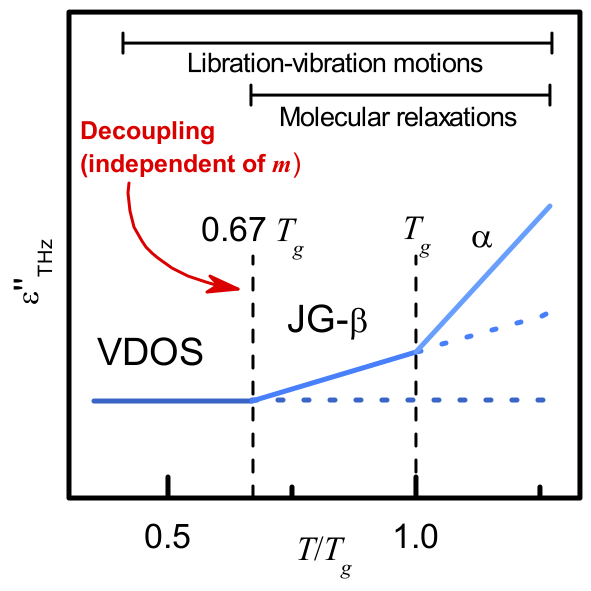
Submitted by Prof. Axel Zeitler on Fri, 23/05/2014 - 14:05
In our latest paper, just published in the Journal of Physical Chemistry Letters, we present data that indicates that the Johari-Goldstein secondary relaxation (which is inter-molecular in nature) is still of significant strength at terahertz frequencies below the glass transition temperature. Intriguingly we found that it disappears at the same relative temperature in all hydrogen bonding samples we studied (0.65 T/Tg).
In addition we are able to demonstrate that the secondary glass transition in hydrogen-bonded materials is not related to the fragility of the glasses as previously thought. The results also show that the region of the fast secondary relaxation, as predicted by the Mode Coupling Theory (MCT), and the region of vibrational density of states are both sensitive to the presence of the secondary relaxation at temperatures down to about 0.65 Tg, where Tg is the glass transition temperature, which could be significant for potential further developments of MCT at temperatures below Tg.
J. Sibik, S.R. Elliott, and J.A. Zeitler, Thermal decoupling of molecular-relaxation processes from the vibrational density of states at terahertz frequencies in supercooled hydrogen-bonded liquids, Journal of Physical Chemistry Letters, doi:10.1021/jz5007302 (2014). 
This work was funded by the UK Engineering and Physical Sciences Research Council (EPSRC).

